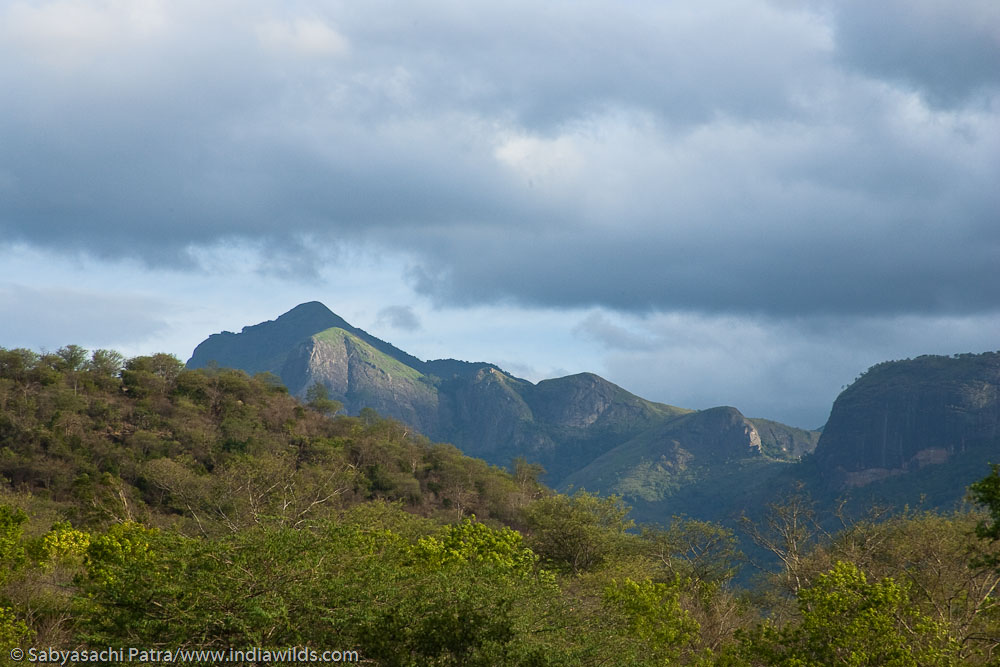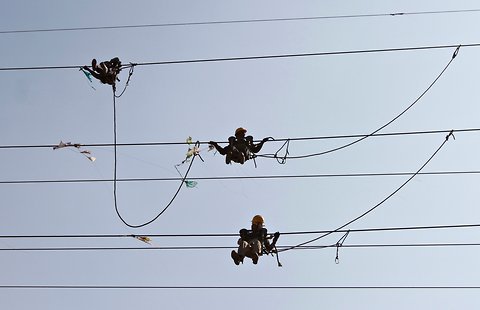What can our planners learn from Kalidasa?
Poet Kalidas bowled over by the beauty of the rich forests and mountain ranges of the western ghats had described the Malaya (modern Anamalai) and Dardura (Nilgiri) mountain ranges as the breasts of the damsel whose head is Agastyamalai and legs are in Sahyadris. Such visualisations and descriptions not only help in understanding of the geography, but also gets imprinted in the minds of the common man. It makes us have a holistic perspective. These descriptions also lead to an emotional bonding and had helped in making our forests, rivers and other wilderness places become a part of our cultural heritage.
Our science teaches us to diver deeper and analyse and dissect. The first thing we learnt in zoology was to dissect specimens. Ecology comes much later, and is unfortunately treated as an unwanted appendage. This story of mostly having a microscopic view on issues continues during our engineering and MBA educations. Whereas the educationists never intended to give less focus on having a holistic perspective, the result is for all to see. No wonder that our planners are ready to dissect and rip apart our mountains and forests rather than think from a wholistic perspective.
A child smells and licks the earth. As he/she grows, we take him further and further away from mother earth. The child no longer appreciates the beauty of the trees, mountains and clouds. How can he learn to protect if we teach him/her not to appreciate it.
And when the child grows up, he/she gets to read in the text books what ever is politically correct in that era. Like many other students, I too had detested some of the modern poetry in our curriculum and used to wonder how such poetry could find a place into the text books. The wonderful poetry of poets like Kalidasa and others describing mother earth in her resplendent beauty is sorely missing.
When genuine poets and artists are not given patronage, it reflects in the overall arts and culture and shapes the minds of people accordingly.
I have been part of some Government of India committees to discuss ways to revitalize the skills gap in people and understand how guarded the ministry is in protecting its turf. So I am not even hoping for a revamp in our educational system to place more emphasis on environment.
So how do we learn?
During my consulting days, when I was on an consulting assignment for a large Indian pesticide manufacturer I used to routinely visit the farmers to first see the usage. In one of the visits, an old farmer had told me that his farm produce is reducing, not only because of pesticides, but because of the division of his landholdings among his children. When you divide the land, you first create markings by making mud walls which serve as path ways for walking. Rather than circumnavigating the land, dividing into small size helped him to move from one part of the field to another quickly so that he could chase away the goat or cattle that enters one part of the field.
The old farmer later realised that the sum total of land available becomes less. He then lamented that he was encouraged to plant eucalyptus trees on the side of their land to not only demarcate it but on the hope of being able to use it for fire wood and sell it to industry. Within a few years the quality of the soil has now deteriorated and the harvest is not good.
In an age where infrastructure creation or urbanisation is happening at a relentless pace, it is important for our planners to not only have a holistic perspective but also understand some simple principles which the village farmer � uneducated in the conventional sense � can give us.
There are many projects, often funded by World Bank and other funding agencies, to construct roads passing through our forests. Our planners often justify such roads by calculating the reduction in the number of kilometers the new road will result in. Our planners need to understand that such roads dissect our forests, fragmenting the habitats of numerous species and pushing some of them on the verge of extinction. The worst affected are our herpeto-fauna who find the wide roads difficult to cover without getting killed. Road Kills Study: http://www.indiawilds.com/diary/road-kills-in-chinnar-road-and-aliyar/
The impact of such road building activities on mega fauna like elephants can also be seen.�http://www.indiawilds.com/diary/wild-india-elephant-attacks/�
I wish our planners, officers and leaders are able to get a holistic perspective and can rise up to the occasion to save our wilderness areas and wildlife.
Kite Flying: Impact on Birds
I was taking my morning walk in the park when I saw a group of people excitedly crowding around. When I came closer I could see that there was a kite string on two trees and a crow is hanging upside down on the string. The crow�s wings had got entangled on the string. Two of them were trying to pick up a stick and hit at the string to break it. Finally the string was broken and the entangled crow and string fell on the ground..Read More..
�My Kumaon � Uncollected writings, Jim Corbett
I was delighted when I heard that Oxford University Press to celebrate its hundred years is coming out with a book comprising Jim Corbett�s uncollected writings. I was anxious to lay my hands on it and immediately ordered it. This book is like a treasure trove.. Read More..
�
Say No to Crackers
Gone are the days when Diwali used to be a real fun filled festival of lights.
Do we remember why we used to celebrate Diwali? Not many can answer.
Swami Vivekananda had said that Hinduism has two parts � Spiritualism and Rituals, unfortunately people focus on rituals. How true Swami�s words are today. The spiritualism is thrown down the drain or the gutters..�Read More
Other Conservation News:
Toxic Idols �
India is a country where we have atleast one festival every month. As our population increases along with increased spending power, the scale of festivities also increases. Little do we realise the enormous impact on the environment. I hope we can reduce our environmental footprint, by first removing toxic materials from the idol making process�
http://www.indiawilds.com/forums/showthread.php?t=11194
Great Indian Bustard sighted in Chelugurki:
In a good sign, there has been sighting of Great Indian Bustard�.
http://www.indiawilds.com/forums/showthread.php?t=11148
Human Elephant Conflict � Odisha
Sad story of human elephant conflict in Odisha. The mines have ravaged the western Odisha landscape and a draft report commissioned by the Odisha Pollution Control Board has attributed the impact of mines on increased elephant conflict. The report hasn�t been accepted�
http://www.indiawilds.com/forums/showthread.php?t=11272
Wild Bear shot dead
A wild bear was shot dead by forest officials after it was found near a village and injured a woman in Bandipora district of north Kashmir. Raja Begum (45) was attacked and left critically injured by a black bear outside her Chatay Bandy residence in Bandipora. The bear was killed at nearby Malikpora locality with the assistance of Block officer, wild life protection (Bandipora).
http://www.indiawilds.com/forums/showthread.php?t=11255
Fresh water fish massacre during migration
The relentless hunting pressure on fishes is leading to species pushed to the brink. It has come to light that during monsoon migratory season people are ready to massacre fishes not only for food but for fun.
http://www.indiawilds.com/forums/showthread.php?t=11138
Amur Falcon Massacre
It is well known that migratory birds find their way to the kitchen. However, what is shocking is the trapping of such birds in huge numbers which can decimate entire populations. Members are urged to strongly raise their voice to the Hon�ble Minister for MoEF Smt. Jayanthi Natarajan at the following address:
Smt. Jayanthi Natarajan, Hon�ble Minister of State (Independent Charge), Ministry of Environment and Forests, Paryavaran Bhawan,�CGO Complex, Lodhi Road,�New Delhi � 110003, Email:�mosefgoi@nic.in, Tel: +91-11-24361727, Fax: +91-11-24362222
http://www.indiawilds.com/forums/showthread.php?t=11135
Conservation Imagery:
Save us from plastics: Steppe Eagle
http://www.indiawilds.com/forums/showthread.php?t=11228
Image of the Month: Oct 2012 �
The IndiaWilds Image of the Month Oct 2012 honour goes to Raj Dhage for his image of Little Heron waiting patiently near waterfall.�
http://www.indiawilds.com/forums/showthread.php?t=11179
Equipment Discussions:
Firmware Update for Canon EOS 5D III
http://www.indiawilds.com/forums/showthread.php?t=11035
Canon announces new 24-70 f4 L IS USM lens & 35mm f2 IS USM lens
http://www.indiawilds.com/forums/showthread.php?t=11171
Lenses for Canon�s EOS 1D C 4K DSLR
http://www.indiawilds.com/diary/wildlife-filming-at-4k-lenses-for-canon-eos-1d-c/
Sony announces large sensor F5 and F55 film camera systems
http://www.indiawilds.com/forums/showthread.php?t=11100
Sounds of Nature
http://www.indiawilds.com/forums/showthread.php?t=11082
Wildlife Photography
Black kite swoop by Abhishek Jamalabad
http://www.indiawilds.com/forums/showthread.php?t=11060
Blue Whistling Thrush by Dr. Kalpamoi Kakati
http://www.indiawilds.com/forums/showthread.php?t=11139
Common Kestrel takeoff by Raj Dhage
http://www.indiawilds.com/forums/showthread.php?t=11187
Crepe Ginger by Vijay Rajan
http://www.indiawilds.com/forums/showthread.php?t=11029
A Baby by Dr. Jitendra Katre
http://www.indiawilds.com/forums/showthread.php?t=10971
Squirrel in my back yard by Mrudul Godbole
http://www.indiawilds.com/forums/showthread.php?t=10964
Unidentified All whites by V S Sankar
http://www.indiawilds.com/forums/showthread.php?t=11110
Bush Cricket � Late instar nymph by Abhishek Jamalabad
http://www.indiawilds.com/forums/showthread.php?t=11107
Green lacewings eggs by Joshi Bhavya
http://www.indiawilds.com/forums/showthread.php?t=11059
Robber Fly by Vikram Gupchup
http://www.indiawilds.com/forums/showthread.php?t=10985
I look forward to your inputs and support in preserving the last tracts of wilderness and wildlife left in our beautiful country. For other interesting articles and images check –�http://www.indiawilds.com/forums/
To post in the IndiaWilds forums, you can register free of cost using your Full Name as user id at�http://www.indiawilds.com/forums/register.php
If you are already a member of IndiaWilds and have forgotten you user id and/or password you can mail to�administrator@indiawilds.com
�
Regards,
Sabyasachi Patra
Profile:�http://www.indiawilds.com/about.htm
Contact:�http://www.indiawilds.com/contact%20us.htm
Facebook:�http://www.facebook.com/pages/IndiaWilds/132629240481
Diary:�http://www.indiawilds.com/diary/
Equipment reviews:�http://www.indiawilds.com/diary/category/equipment/
Forums:�http://www.indiawilds.com/forums/index.php
Channel:�http://www.youtube.com/indiawilds
Please post your views and feedback in the comments below.
- GoPro Hero 12 Black - 6 September,2023
- Leopards: The Last Stand - 2 July,2023
- Drifting in the Waters of Sundarbans - 26 March,2023


















A very well compiled article! It’s high time we stop doing things or taking part in activities that degrade our environment or disturb nature in any which way. Efforts like yours then, surely pave a way for a bright future tomorrow. Thanks for leading it, kudos and keep it going!
Arti,
I just came out of a tiger reserve and the amount of destruction done to the pristine forests is unbelievable. We all need to put in our efforts, else we won’t be able to stop destroying our environment.
Sabyasachi